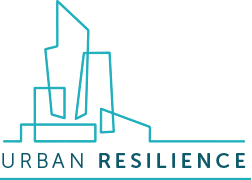In this article we consider whether the role of economic diversity in the resilience of an economy. Whilst the evidence is mixed it seems that the Goldilocks principle – neither too much diversity nor too little – is the best.
Economists have long argued about the relative merit of a diverse economy over an economy that is highly specialised, particularly when it comes to questions of innovation and economic growth. Research into the resilience of economies has also explored this question. What emerges is a complex picture.
On the one hand, some authors point to how specialisation helped some regions to avoid the worst effects of the financial crisis of 2008/09. Others point to the fact that, overall, it was those regions with more diverse economies that were most able to withstand and recover from this economic shock. It seems that if a region was fortunate enough to specialise in a sector that was not affected by the crisis then the economy was able to ride out the shock, but, if on the other hand, the region specialised in a sector that was affected by the crisis then the impacts were accentuated. For many policy makers this would appear to be a very risky strategy. However, the picture is more complicated than this.
Whilst there is an increasing consensus amongst academic researchers that the positive effects of a diverse economic base on economic resilience are “unambiguous”, it seems that this is only the case at the onset of a shock and in the immediate aftermath of a shock. Empirical research suggests that a more specialised economy is more conducive to economic growth prior to a shock and is more likely to support economic growth as the economy recovers from a shock. In fact, drawing on comparative data from American counties, Goetz and colleagues suggest that whilst diversity can help limit the effects of a shock to an economy, it actually hinders longer-term recovery. This presents policy makers with something of a dilemma.
In an effort to marry these two apparently contradictory elements researchers have considered the nature of similarities between firms that operate in different sectors. The argument is that if firms share skills and competencies even though they operate in different economic sectors then they might be subject to different economic cycles which could provide resilience to the economy as a whole. Ron Boschma, Professor of Regional Economics at Utrecht University notably refers to as ‘related variety’. Cainelli et al (2019) find that related variety in an economy assists adaptation over a three-year period (but has no effect over one-year), and so promotes resilience over the medium-term. Similarly, Goetz argues that ‘complex’ economies, that is those with diverse but inter-related and connected sectors, promote better recovery rates and so impart stronger resilience over time.
Of course, where firms have strong linkages to other firms in a region then there is always the risk that the effects of a shock will be magnified. This can be the case even where firms are in apparently diverse sectors, as Finland experienced with the downturn in economic fortunes at Nokia, owing to the nature of modern production networks. This highlights the importance of understanding the degree of dependency presented by intra-regional interconnections between firms.
There is also some evidence that an economy that is made up of inter-related sectors can offer more opportunities for the re-employment of workers affected by an economic shock. The extent to which workers’ skills relate to other sectors can have a significant influence on their ability to transfer between sectors in the advent of an economic shock. Where comparable opportunities exist then the local labour market is more likely to prove resilient. In the absence of such inter-relatedness, workers may be forced to accept employment at lower skill levels or to look for employment opportunities outside of their home labour market.
Whether the particular mix of industries present in a region has a bearing on its resilience remains an open question. Some argue that a concentration of manufacturing activity tends to amplify economic shocks, whilst business services are more likely to act as regional shock absorbers and promote recovery. However, other research suggests that it is not simply the sector that is important but differences in the types of firms to be found within particular sectors. Equally, where regions have greater employment shares in sectors that are less susceptible to demand fluctuations there is some evidence that this can make them more resilient to shocks. However, other researchers have found the opposite to be the case. As with so many aspects of resilience, it is likely that the nature of the shock is as important as the structural features of the economy to the resilience outcomes observed.
Overall, the available evidence seems to suggest that an economy with a complex mix of related sectors that have a degree of interconnectivity provides the optimal balance for resilience and recovery. However, policy makers will want to assure themselves that those connections between firms are not so strong that the effects of any shock will be magnified as it reverberates through the economy.
Dr. Adrian Healy is a UKRI Future Leaders Fellow. All views expressed here are his own.
